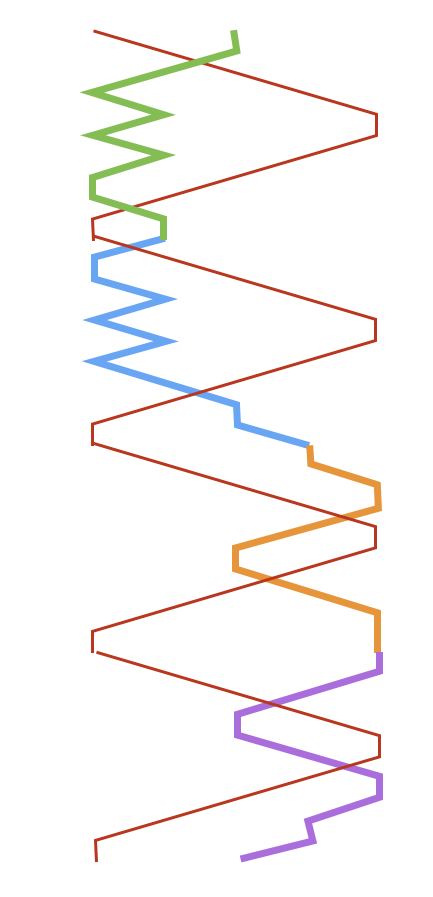
St Simon's and St Nicholas...
Like Plain Bob and Reverse Canterbury, the only difference between the St Simon’s group and St Nicholas group is the blow before and after the lead end… (changes 1 and 9).
In St Simon’s we hunt all the time and therefore dodge at the lead end. In St Nicholas we make a place the blow before and after the lead end, so the dodge turns into a set of places…. (the lead end is itself is actually the same!).
So whereas St Simon’s is related to Plain Bob… St Nicholas is related to Reverse Canterbury.
The Reverse Canterbury lead end means that the cycle of work (and place bell starts) change:-
3rd place bell makes a place in thirds and starts the front work by dodging twice before leading and making 2nds and 2nd place bell.
2nd place bell will make places up after the front work double dodge and become 4th place bell.
4th pace bell makes a place in 4ths and starts the back work… lie, then 3rds and back before making 4 blows behind and becoming 5th place bell.
5th place bell will finish the final blow then hunt to 3rds and back before making places down and becoming 3rd place bell.
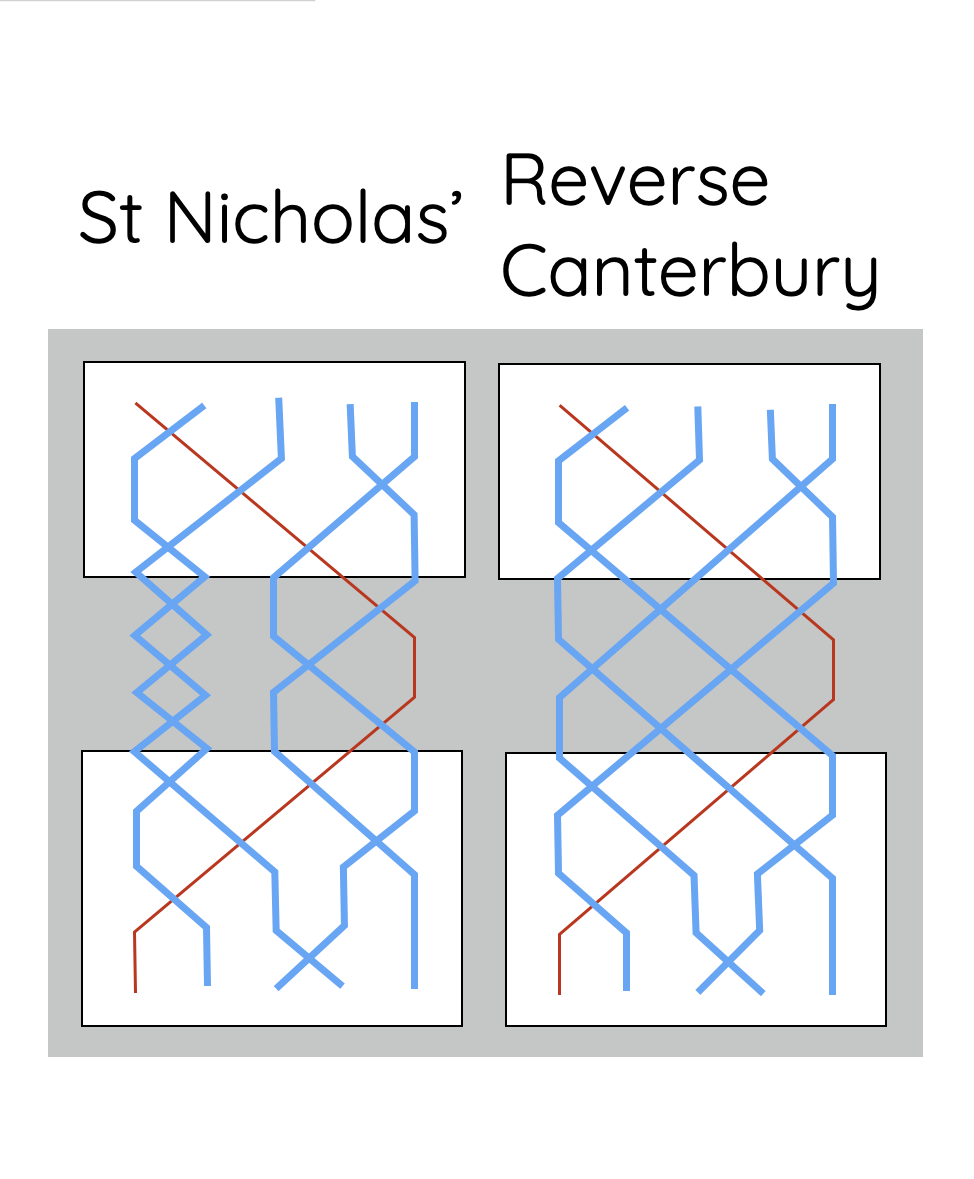
Changing Places...
If we compare St Nicholas to Reverse Canterbury, we can see that the first 3 and last 4 changes are exactly the same (in the white boxes)… only the middle three changes vary.
However, because of the Reverse Canterbury lead end, the place bell order changes.
In St Simon’s we rang 2 – 3 – 5 – 4 –
In St Nicholas we ring 2 – 4 – 5 – 3 –
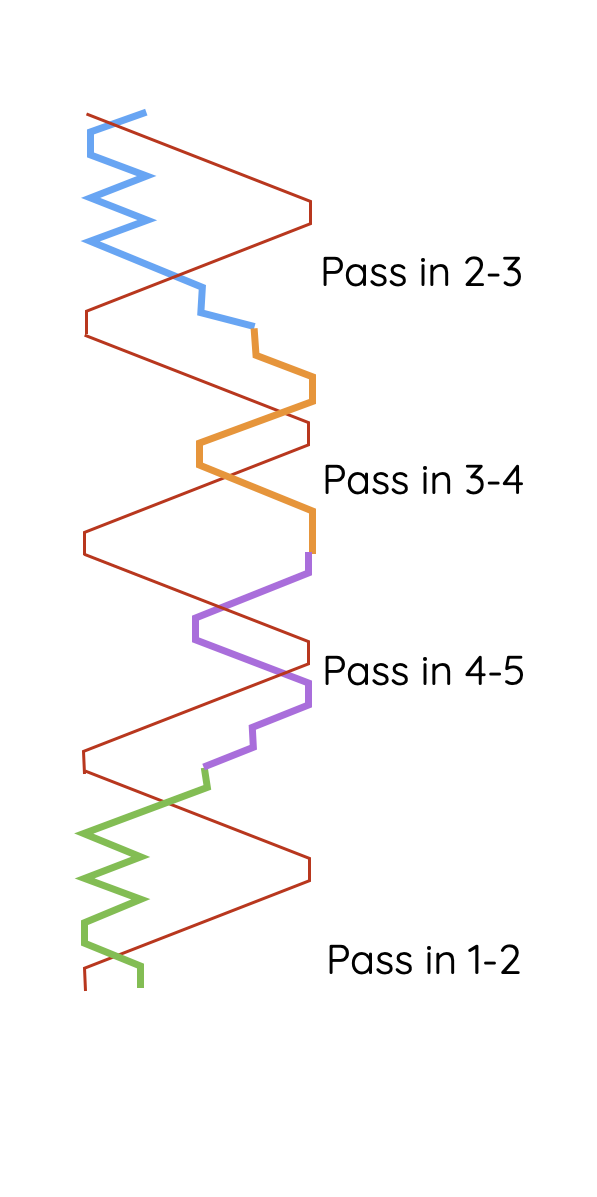
The Treble...
The treble is always very important and it is not different with these methods…
Because the bells are either doing back or front work, the treble will pass bells in a different order on the way up and down.
On the way up – a,b, c,d,
The return order – c,d, a,b.
This information will be useful to learner who has limited rope site, but should not cause any issues for anyone else.
Much more important is the fact that each bell will pass the treble as per Reverse Canterbury… so this will help an experienced ringer to navigate if they momentarily get distracted.
If you pass the treble in 4-5 (i.e. last) then you are about to do 4-3 places down, become 3rd place bell and start front work.
It you pass the treble in 3-4, then you are about to make 4 blows behind.
If you pass the treble in 2-3, you are about to do 3-4 places up, become 4th place bell and start the back work.
If you pass the treble in 1-2 you are making 2nds!

Bobs...
Bobs are the same as Reverse Canterbury. So when the call comes…
Making thirds (places up)… then run in and become 2nds place bell… (front work).
Leading… run out and become 3rds place bell… (make 3rds and re-start the front work).
Making 4ths (places down)… do another blow in 4ths. 4ths place bell… (complete with a 4th blow in 4ths before going back up).
Making 5ths… continue unaffected. 5th place bell.

Changing Places...
Just like the St Simon’s Group, there are 4 possible front work permutations.
St Nicholas has 2 dodges and is the same as St Simon’s.
Winchen Place has places like St Martin’s.
Like Reverse Canterbury Pleasure Place… Winchendon Place gets the name ‘Place’ because there are no dodges at all in this method.
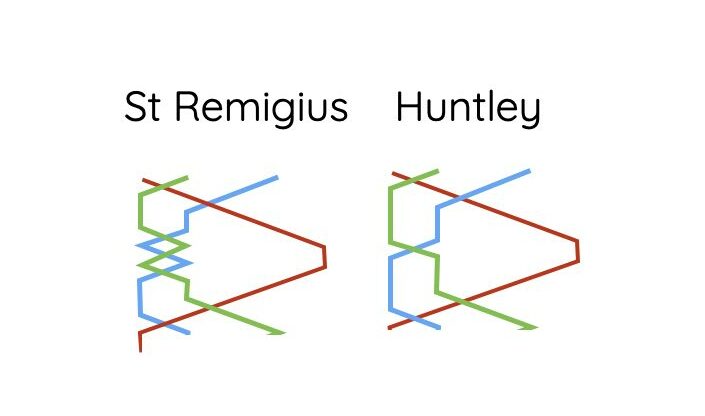
Changing Places...
The remaining two variants, are the same as St Osmund’s and Eynesbury.
St Remigius, has extra places added at changes 3 and 7, so has three blows lead, a single dodge (wrong!) and an extra blow in seconds. It is the most tricky of all the front work variants.
Huntley Place also has the extra places at changes 3 and 7, and is places based, so everything doubles up. It has 4 blows lead and 3 blows in 2nds, making it the simplest of the variants.
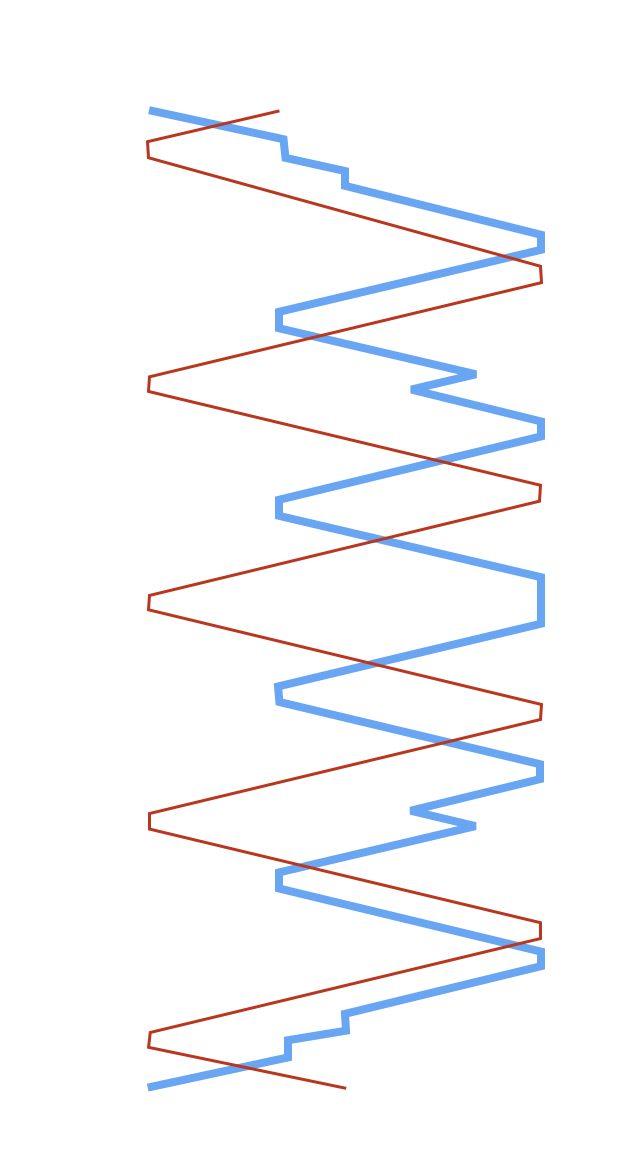
Extending...
The extension of St Nicholas group methods is very similar to the St Simon’s group and Reverse Canterbury (but without the naming confusion!)
The front work adds in two extra dodges in St Nicholas and an extra set of places in Winchendon… There are 14 other front work possibilities too, but few are commonly known and some have never been rung, so have no names yet.
The back work (see adjacent diagram) adds in dodges in 5-6 just like Canterbury Triples. If you wish to have places in both 3-4 and 5-6, then the name changes to an as yet un-named method.
The links below take you to the CCBR Library and Blue Line database… if you search from these sites you will be able to find all the various alternative fontworks and related methods.
